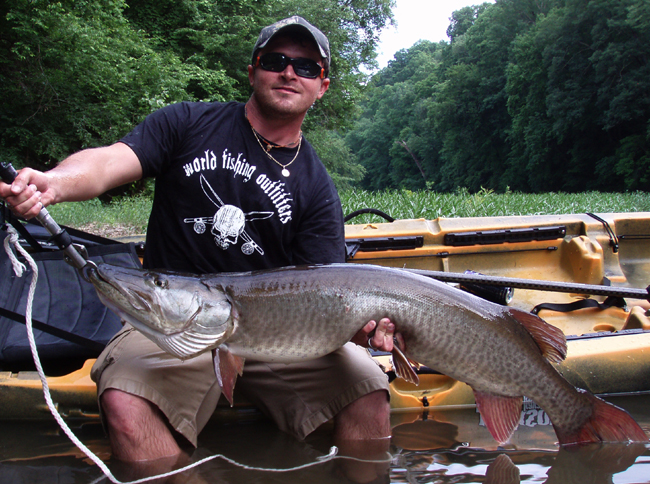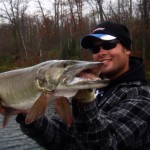Participating in a sport that is inherently conducted mostly on a battlefield of perception, interpretation, and imagination fathoms below our fiberglass footing. Few are the occasions when the gap between angler and adversary is bridged to the level where they can not only go toe-to-toe, but meet eye-to-eye before locking horns. In musky fishing especially, the opportunity to visually connect with the quarry before engaging in combat is something that is usually relegated to the vernacular figure-8 stage of the tooth-jawed tango, or in the event of some rare seasonal or thermal conditions that dictate an abnormal location for the fish to be setting up in.
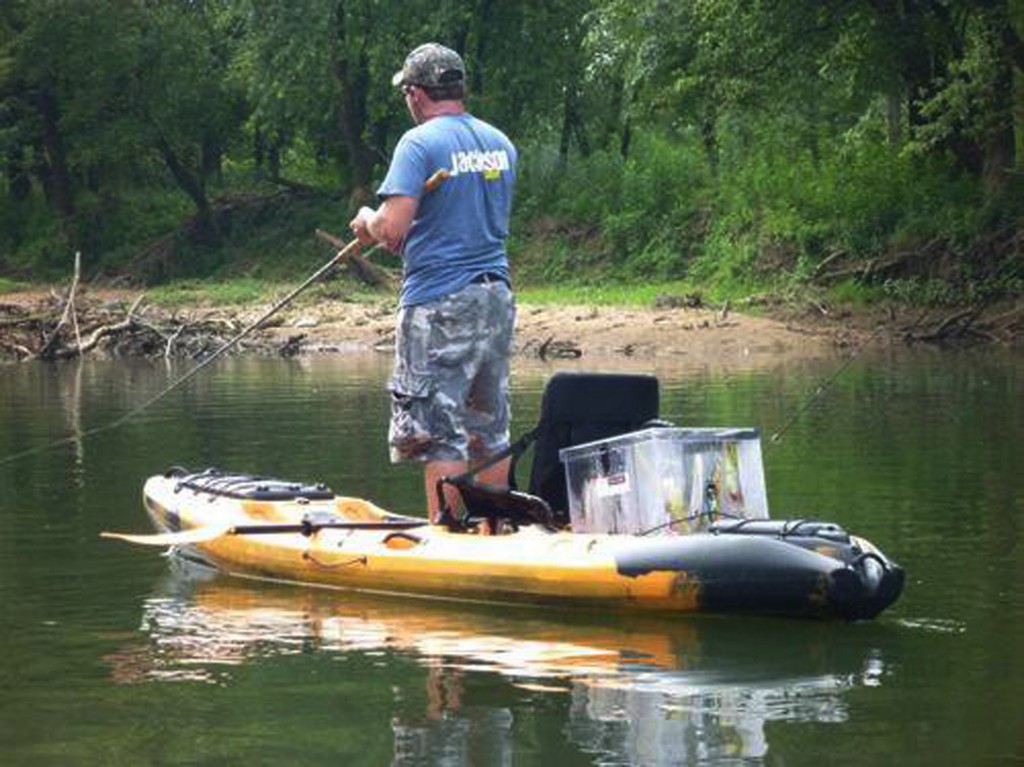
Then there are those waters, like those I regularly prowl along the southern range of muskies down here in Tennessee, where the ebb and flow of spring rains, accompanying the coming-and-going of the urge-to-merge for X and Y muskies, leads to populations of lakeborne water worms being pigeon-holed into circumstances that are not particularly their first choice in real estate… Extremely shallow, relatively cover vacant alleys of remote river, with little current or other prevailing factors to offset their inability to escape to deep water haunts in the daily grind to react and adapt to the conditions that present themselves minute to minute.
Muskies, as most fish, are hardwired to seek deep water sanctuaries when the weather and water conditions go south, in most instances, as it is one static concept that the deeper they go, the further they get away from environment-altering light. Then again, what happens when this is out of the option…when fish are stuck in 1-5 feet when their biochemistry is screaming at them to get into their 35 foot panic room? While, yes, we have considerable success with these fish taking our kayaks out at night and chucking topwaters into the abyss, running a gauntlet of maw and ever ready to soil our depends as a musky decides to finally ambush its prey against the side of our 80 lb plastic bananas, it constantly begged the question, and taunted our egos…what do we do with the remaining 12 hours of the day?
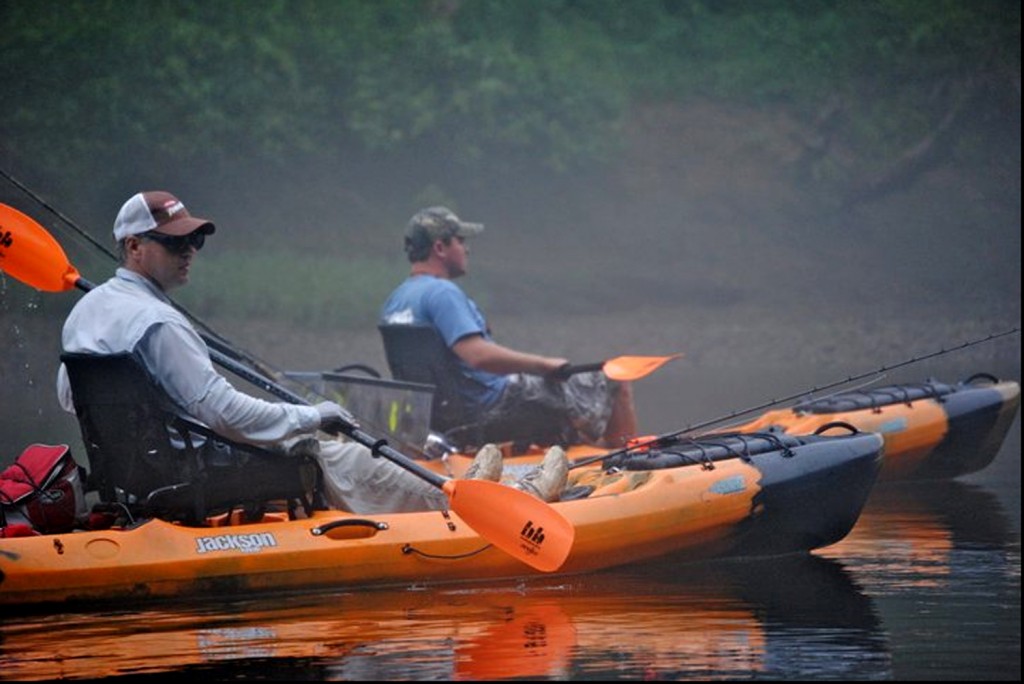
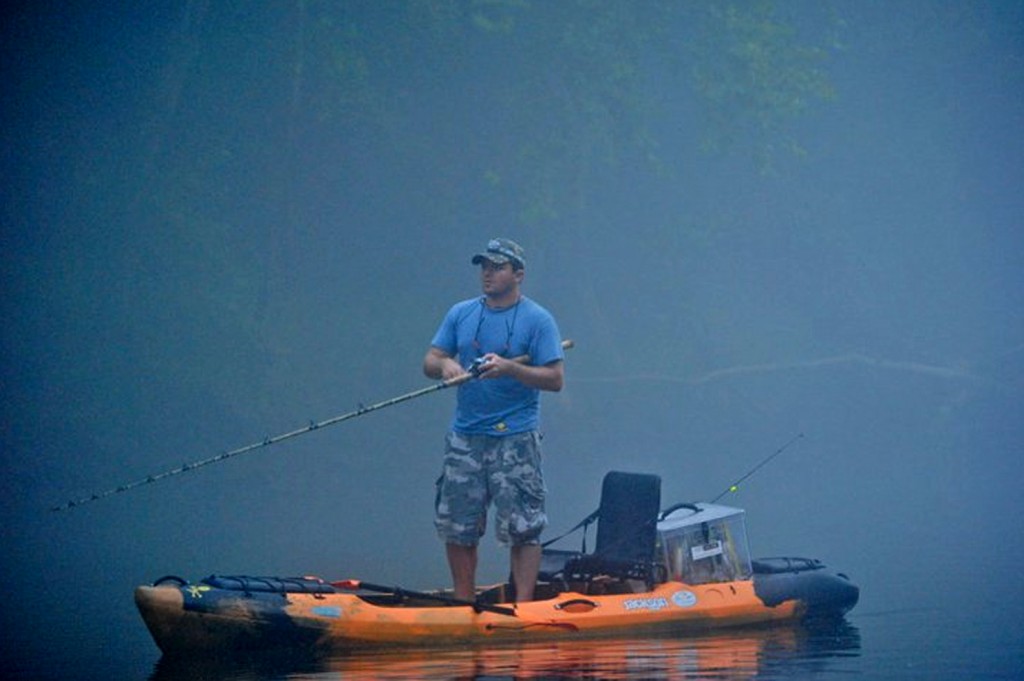
Sure, we could pull some fish in the critical minutes and sometimes seconds of the low light transition periods [Matthew McConnaughey calls it the “Magic hour” in “Reign of Fire”, a B-class sci-fi movie about, what else, slaying dragons], after those amorous few moments, we were often easily torn from the one-story musky water to pursue other more fruitful opportunities like Xbox 360. While these distractions provide momentary relief, I eventually found myself being tormented by their very existence. Even though the lake trolling bite was hopping and the trophy potential is far greater, the allure of the known was too great to ignore. So that’s when I set out to study these quarantined muskellunge and learn what made them tick.
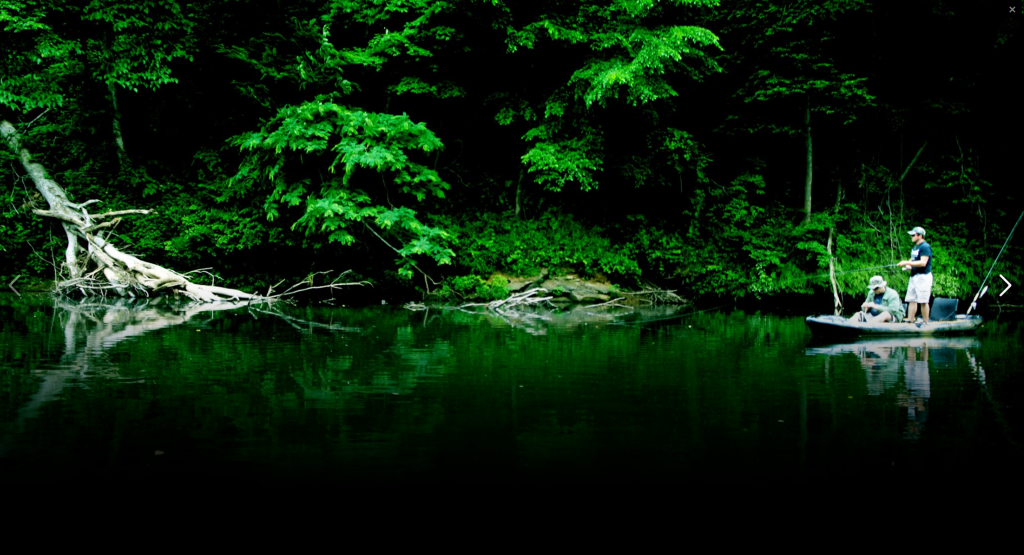
The same things that made these particular fish difficult to approach and catch – extreme water clarity, shallow depth, pressure, lack of cover – also made them much more willing candidates for study, and that much easier to manipulate and train to jump through my hoops. Over the course of a couple weeks, during a period of extremely low water, I entrenched myself in a single mile stretch of river containing two 5 foot potholes, bridged by an isthmus of shallow 8”-24” limestone flat. Using the “Jane Goodall” method, I spent hours engrossed in doing nothing more than watching, observing, creating adverse stimulus, and studying the response. It was obvious these fish, as goes for all fish, were not creative consumers, but simply reactive organisms. In other words, fish don’t get smarter; they get more conditioned by stimulus. The difference between the two? Cognitive awareness…cognitive awareness, God forbid fish should ever develop it, will add the wild card of creative evation to the process of angling. Thankfully though, even in this instance where the muskies were easily aware of my presence long before theirs, they could be manipulated. After all, Pavlov’s dog wasn’t aware he was drooling at the sound of the bell, and neither would these muskies after I learned how to ring theirs.
One thing is a given… the old school musky methods of hack-and-slash don’t work well down south. If they did, there would be no fish in this section of river without a hair-lip, as it had been pounded by many-a musky junky for days since the water and current had subsided into algae bloom soup. Of course, going down the list of controls at our disposal to get these fish to strike, by the Buck Perry methods of angling, our depth was a non-issue. There technically was no depth, and almost every fish could be seen with a stand up kayak, a quiet paddle, and a pair of Oakley sunglasses.
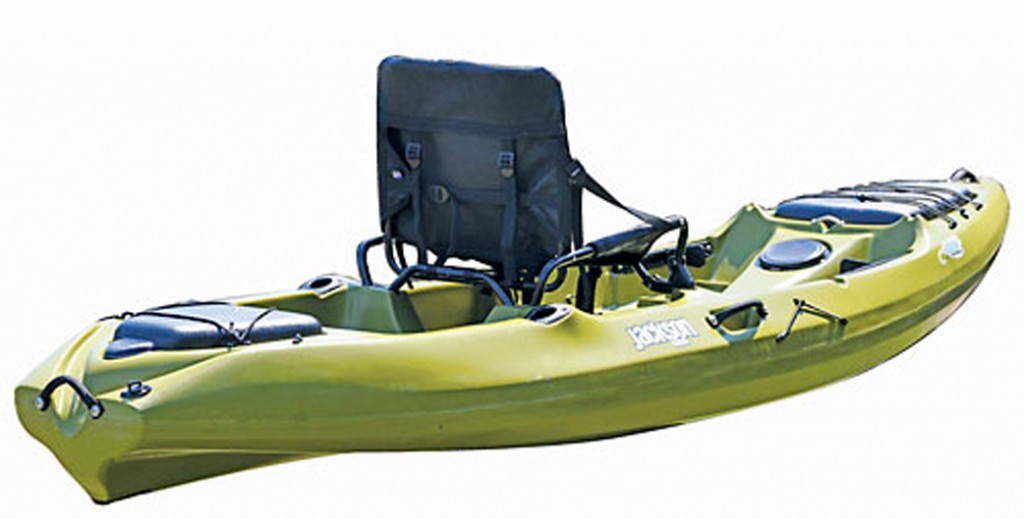
So, our next two controls to consider would be speed and size. I personally chose to address size; it quickly became apparent that my “Minnesota Fats” edition Pool-cue musky rod wouldn’t do the job. I finally chose a bit more graceful gear setup, a 7 ft heavy action St. Croix spinning rod, a quality Pflueger spinning reel, 30 lb Invisibraid, and some 60 lb AFW Surfstrand wire leader. This rig allowed me to throw the smaller sticks I wanted a 50” musky to fetch. Of course, if you want to get your muskies to play with you, the toys you pick are crucial for getting them to cooperate.
What is interesting in this instance is that it became apparent that size DOES matter…but often in the OTHER direction. These neutral/negative mood sun-beaten muskies were definitely not up to the usual sucker de jour. Their current condition, and inability to alleviate it by escaping to deeper water or heavier cover, left them with a bit of a hangover; the fish equivalent of a frat boy passed out on a stranger’s couch until 1 pm.
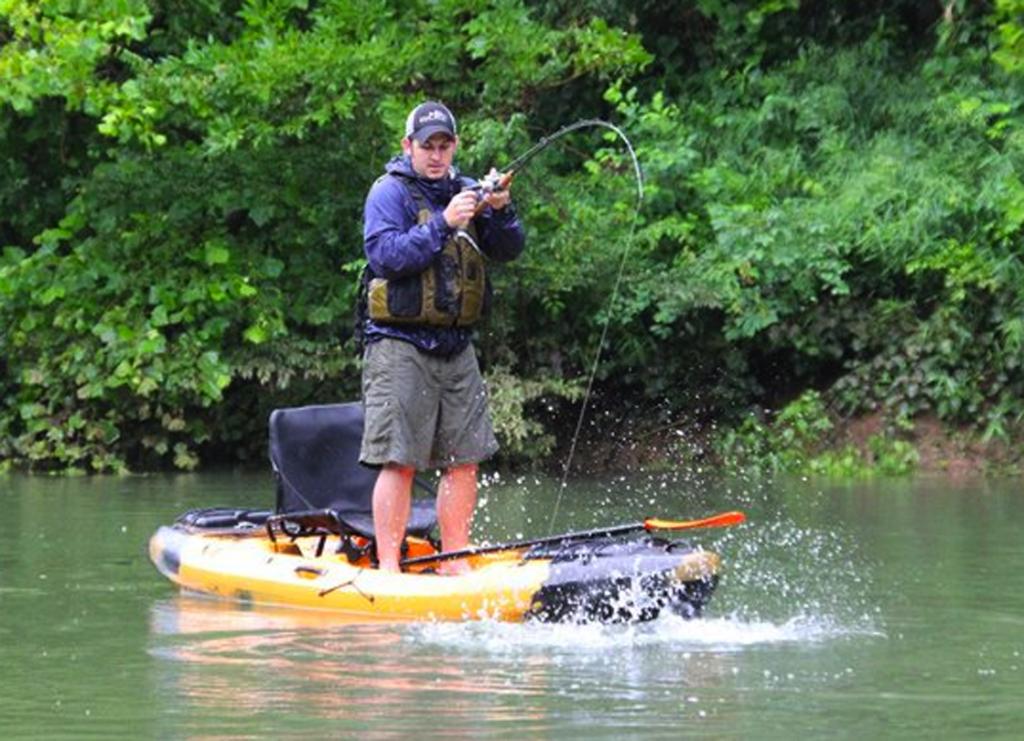
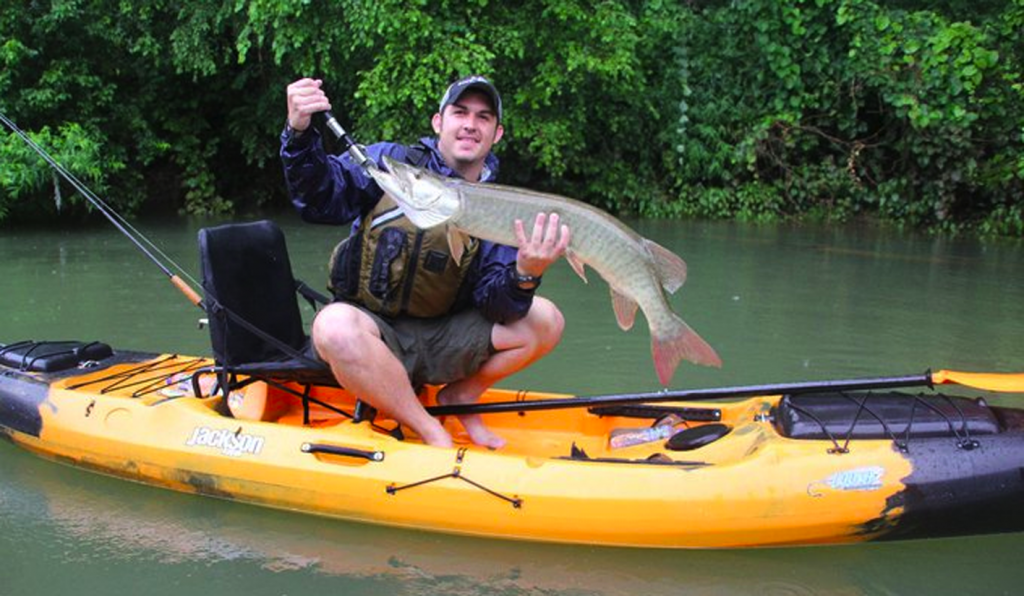
Most fish I encounter are sitting completely still, sometimes in inches of water, only showing any signs of life as my kayak would approach their immediate vicinity, which were usually first evidenced as an agitated twitching of fins and flaring gills, leading to the flick of the tail and a 50 foot lead on my stance. As I stumbled upon more and more of these specimens, and studied how they reacted to my presence, it was slowly adding more pieces to the puzzle of how to present an offering. It was obvious these fish were edgy…you would be too if the ceiling of your house was 15” above your face…and it greatly affected how they reacted to the human presence in their world. To offset this, I decided that the best toys to throw for them to fetch would be the lightest, most subtle I could find: Soft plastics.
Soft plastics are a relative newcomer to the average musky hunter’s vocabulary list. When most say “plastic”, images of 16 ounce soft rubber abominations with treble hooks piercing them like a Goth chick at an off-campus coffee shop come to mind. But that’s not what we’re talking about now. Most of the morsels I am throwing at these fish rarely are weighted more than a half ounce, and more often a quarter ounce to weightless rigs [a weightless superfluke is actually my “secret” trophy bait for skinny water sight fishing… …ooops…]. These baits not only have a cleaner entry than an anorexic Olympic diver, but they both respond to very subtle movements of the rod tip, resulting in pulsing and quivering without necessarily lifting or lateral movement. This, as it turns out, is crucial for getting your pet musky to pick up the stick in the first place.
Let me reiterate here that while it is not necessary to fish a situation like this from a kayak, it is a very important tool in the pursuit of these acutely aware muskellunge. Not only does a good stand-up kayak allow for extreme maneuverability and vantage points, but it has less draft and drag through the water, thus creating much less lateral line stimulus to interfere with the subtleties of your presentation.
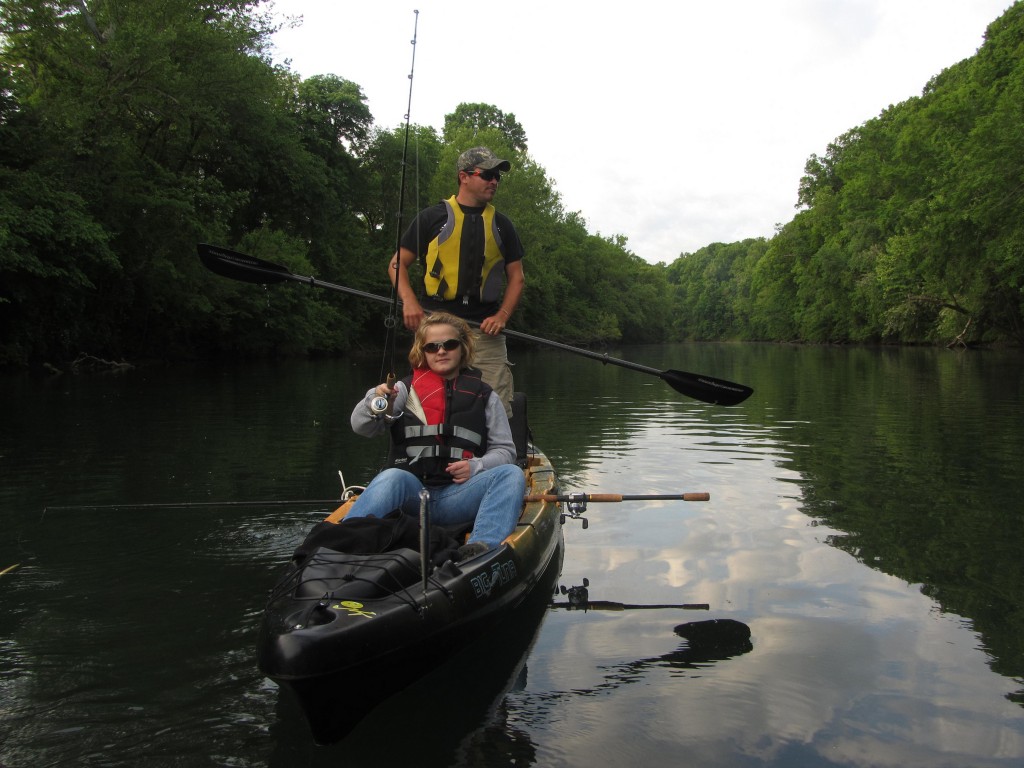
Utilizing a stand-up kayak allows you to paddle with a silencer, by making your strokes entirely beneath the surface, completely minimizing audible wake off the paddle, and cloaking your movements to one more attuned musky sense. I’ve accidentally stumbled into the den of, and subsequently spooked muskies with the kayak. But by maintaining clear visual contact standing up, I have successfully pursued them at a distance for up to 100 yards before they settle down again. Give them a few moments to catch their breath, and place a “morsel” right in front of their face, only to see them gently pick it off the bottom and start to swim off casually. To me, this is the only TRUE musky hunting there is: Picking a quarry, stalking an individual fish, setting up on the best position for the “shot”, and alluring the fish to pick up your offering and jar its jaw.
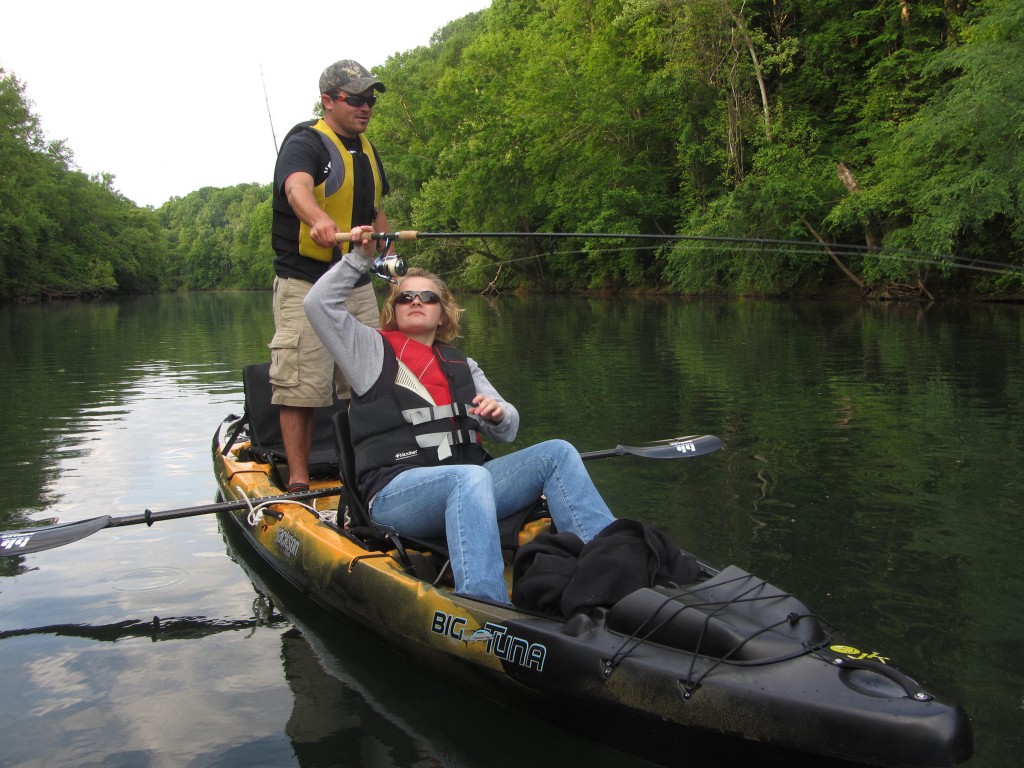
If I haven’t made this clear yet, these muskies are not taking baits in mid-flight. In fact, they rarely take them as they are moving at all. Any motion is simply implemented to make your bait appear from the surrounding canvas; after the attention is drawn, the instincts of the muskellunge will usually do the rest. Meaning, if they’re just staring at the thing on the bottom, don’t lose heart…. she’s usually only moments away from sealing the deal.
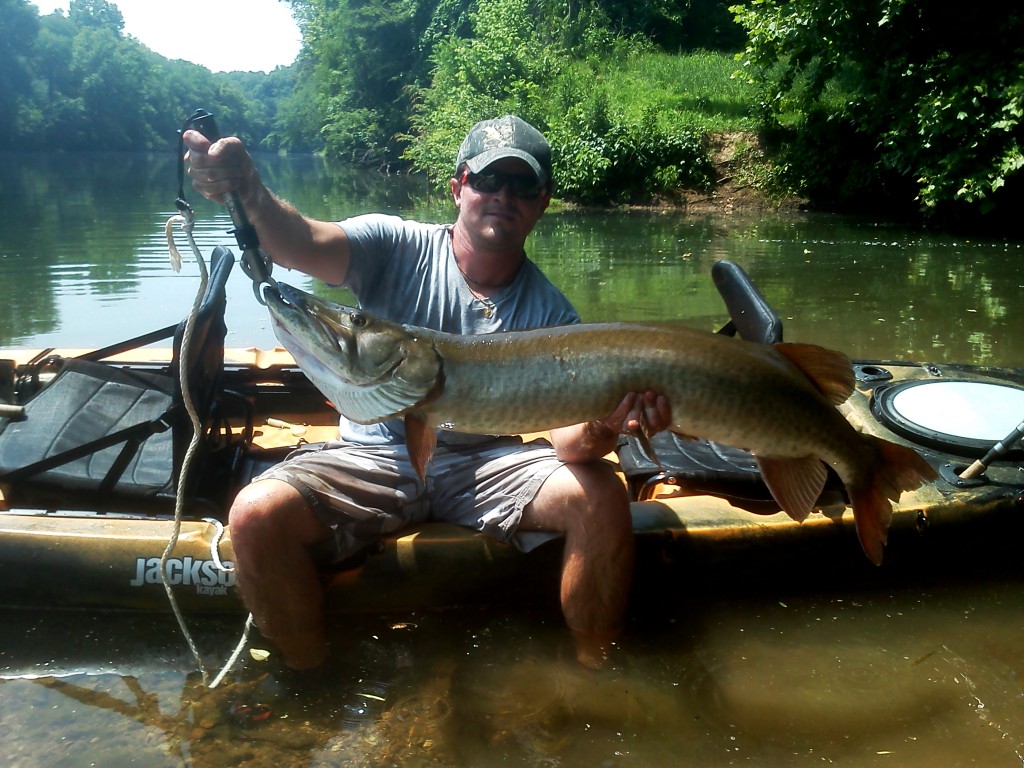
While trying to target these relatively frustrating conditions, pursuing one of the world’s most notoriously frustrating fish can add a little salt-and-pepper to your widow’s peak. The fruits of accomplishment, and the ability to tame muskellunge that ignore other anglers, is definitely a reward all its own. While most of the statistics on big fish caught will always belong to the massive trophy factories, and baits that imitate Shih-tzu’s falling from suspension bridge as they hit the water, there are most assuredly pockets of untapped muskie fisheries ignored around the country. By utilizing the right craft, tackle, and knowledge, not only are you given the upper hand in the game, but you are also provided with one of the most unique, challenging, and rewarding experiences to be had in freshwater fishing.
Oh, FYI….. for all your fly-flingers and fluff-chuckers out there….if you hadn’t put the puzzle pieces together, your methods blend marvelously with this tactic. But alas, it’s another story for another time. Until then, enjoy watching many big muskies bring your rubber toys back to the boat, with tails wagging gleefully.
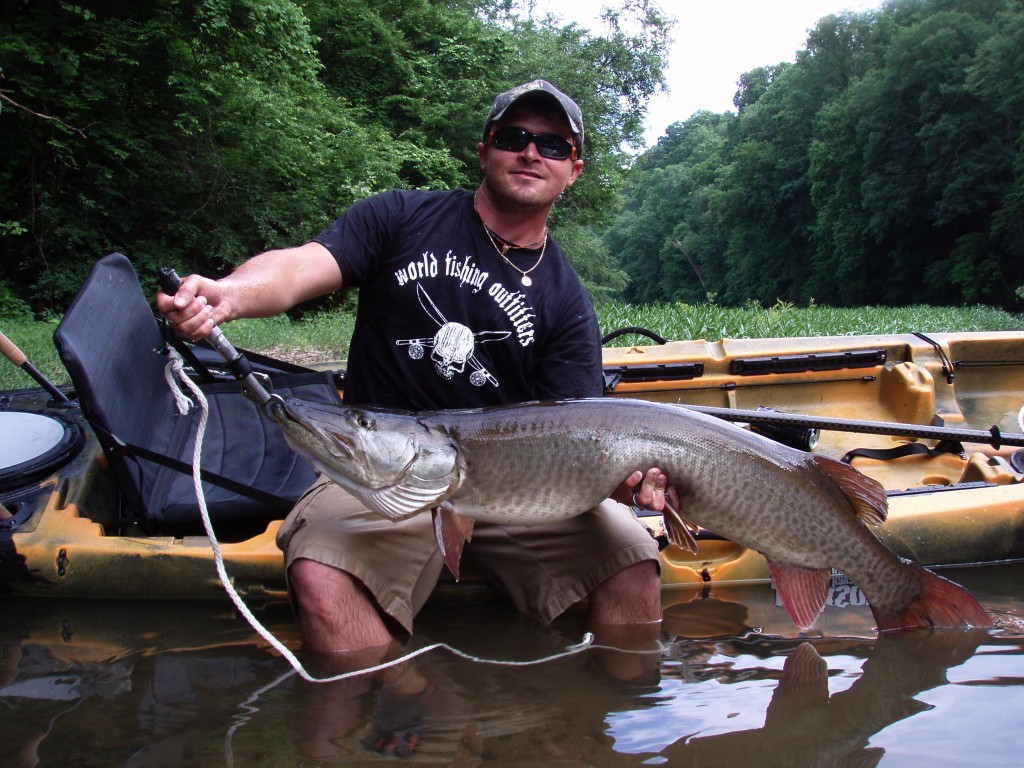
Cory Allen, 27, of Cookeville Tennessee is the founder and lead guide of Stone’s Throw Adventures. As a member of the Jackson Kayak Fishing Team, Cory’s specialty is muskellunge by kayak and boat. Allen’s team of guides fish the waters of Kentucky, Tennessee, and occasionally Southern Illinois on a year-round basis and offer their clients a variety of fishing trips for all species of fish.


